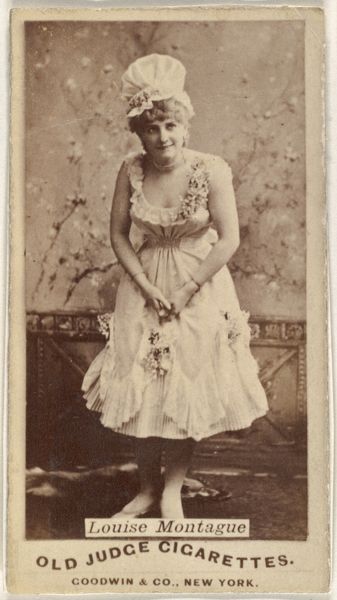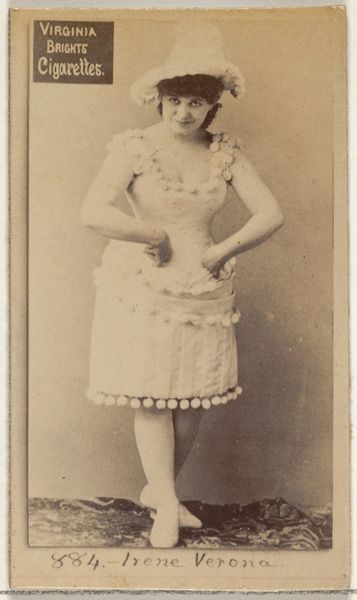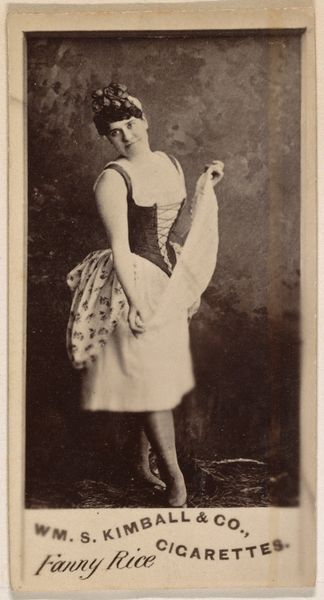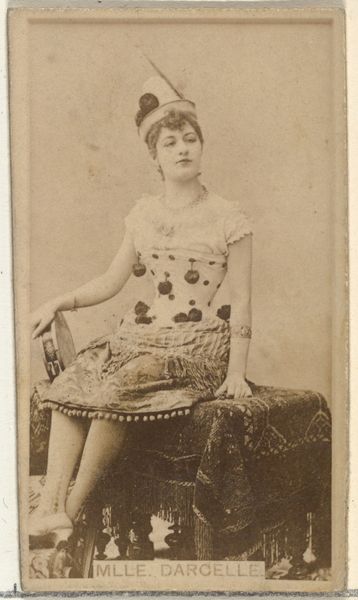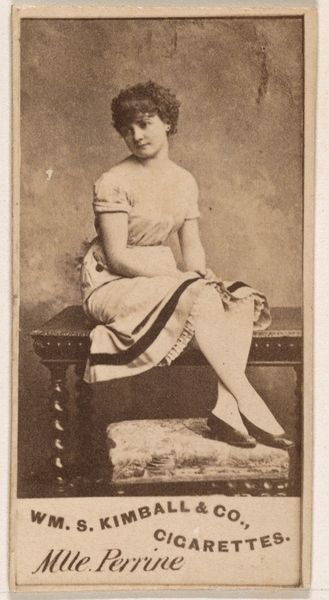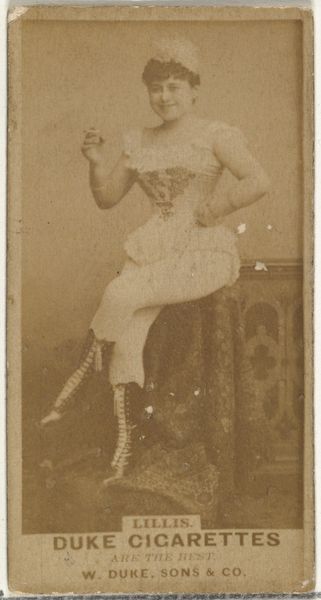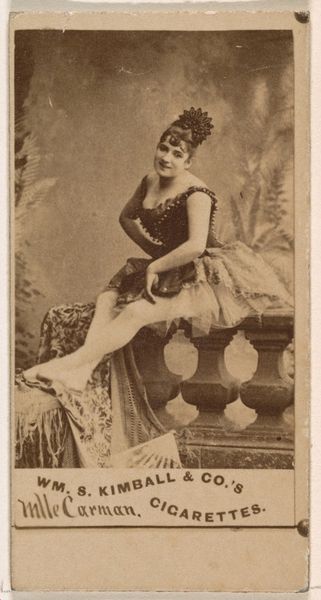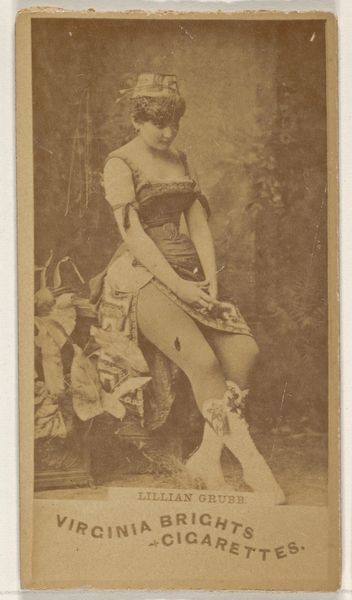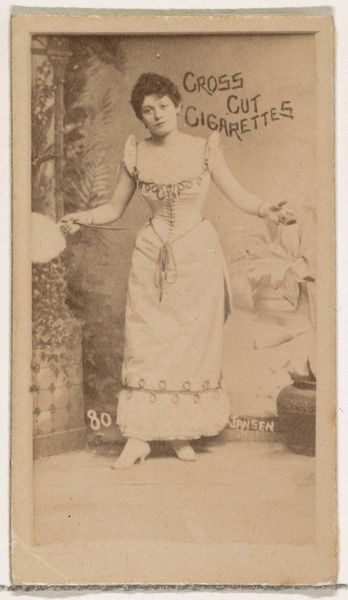
Lilio Lister, from the Actresses series (N203) issued by Wm. S. Kimball & Co. 1889
0:00
0:00
drawing, print, paper, photography
#
portrait
#
drawing
#
pictorialism
# print
#
charcoal drawing
#
paper
#
photography
#
pencil drawing
Dimensions: Sheet: 2 5/8 × 1 3/8 in. (6.6 × 3.5 cm)
Copyright: Public Domain
Curator: We’re looking at "Lilio Lister" from the Actresses series (N203) by Wm. S. Kimball & Co., dating back to 1889. It's part of the photography and print collection at the Metropolitan Museum of Art. Editor: Oh, isn't she saucy! Like a cheeky bird perched there with her cigarette. She's got that playful defiance in her eyes, all wrapped up in those lace-up boots! It’s an intriguing snapshot of the era, this pictorial style… like someone caught a little spark of rebellious energy. Curator: Indeed. Pictorialism sought to elevate photography to the realm of fine art through manipulation of the image. Consider the tonal range—it moves beyond simple representation toward something…interpretive. Editor: See, to me it’s all about the framing. It's cozy, intimate, a little glimpse into the behind-the-scenes. And the juxtaposition of textures – the smooth paper against the soft focus of the backdrop. I feel like she's winking at us across time, saying, “Life’s a stage, darling!" Curator: Formally, one notices the composition relies on a deliberate interplay between verticality and horizontality. Lilio's body provides a strong vertical axis, stabilized by the horizontal lines created by her seated pose and the backdrop. Semiotically, the cigarette could be viewed as a signifier of modernity, but also, potentially, of social rebellion. Editor: You know, the fact that it was used on a cigarette card gives it an everyday sort of twist. And maybe that makes her even more intriguing… because the elite, or those who aspired to it, would consume these. And that pose, it’s daring. It feels really self-aware, like she is not just showing us an image but projecting an entire persona. I can almost smell the perfume and the smoke mingling! Curator: A keen reading of both the visual elements and historical context elucidates the piece's aesthetic and cultural significance. Thank you for lending us your particular insight. Editor: No, thank you for inviting it! Made me feel almost as rebellious as Lilio here!
Comments
No comments
Be the first to comment and join the conversation on the ultimate creative platform.

